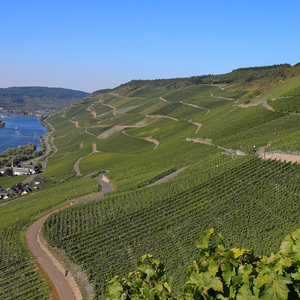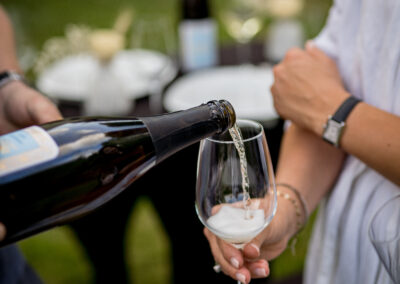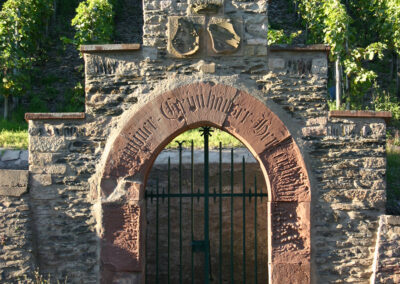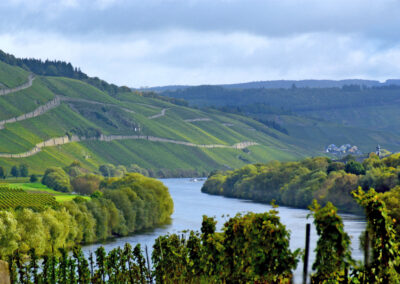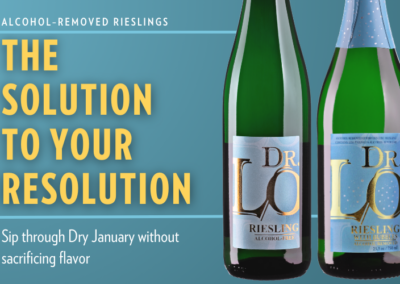Riesling is one of the few grapes that can produce wines in the complete spectrum of styles, from totally dry to extremely sweet, and still maintain its distinctive fruit character and fine structure. This unique ability gives Riesling a stylistic range that no other variety can match. Take a deeper look at the dry wines from Germany’s finest vineyards and discover the best dry wines in our portfolio.
What is a GG Riesling?
A dry wine from a Grosse Lage vineyard is labeled as Grosses Gewächs (GG) and is not released until at least one year from when the grapes were harvested. This extended maturation stabilizes the wines naturally and allows them time to develop greater texture and complexity. Grosse Lage (“Great Site,” equivalent to Grand Cru) is the designation for Germany’s finest vineyards, which produce wines notable for their individual character and ability to express the essence of their unique terroir. The GG designation was developed by the VDP, Germany’s association of the nation’s top 200 wine estates that adhere to a strict vineyard and quality classification system. It is an internal standard that all members must follow to ensure the finest quality.
Dr. Loosen GG Rieslings
All 10 of the Dr. Loosen vineyards are designated as Grosse Lage by the VDP. Let’s take a closer look at the GG Rieslings from Wehlener Sonnenuhr, Ürziger Würzgarten, and Erdener Treppchen.
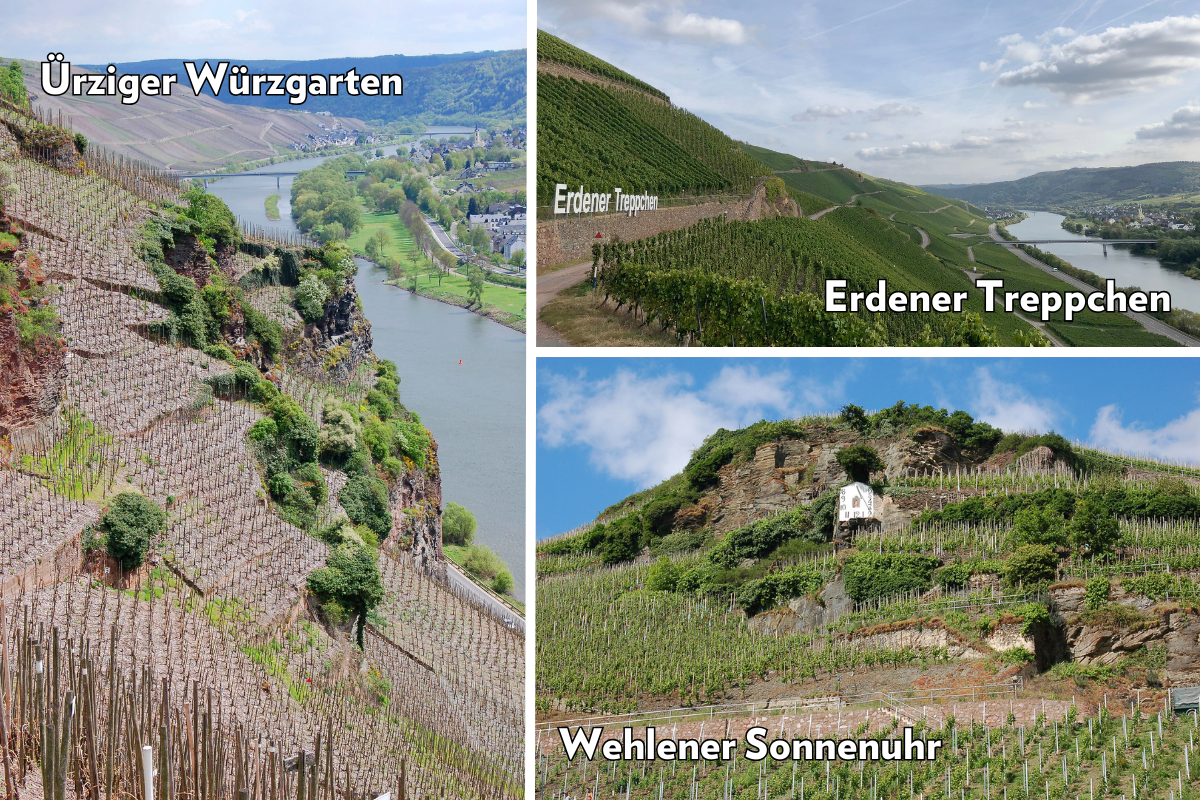
Dr. Loosen Vineyards – Ürziger Würzgarten, Erdener Treppchen, and Wehlener Sonnenuhr
Wehlener Sonnenuhr
The pure blue slate soil gives the wine a delicate finesse and a feather-light structure that perfectly captures the captivating grace and depth of the iconic “sundial” vineyard.
Ürziger Würzgarten
Blazing red and insanely steep, the Ürziger Würzgarten vineyard is aptly named “spice garden” as it produces wines with rich texture, gentle acidity, and a lingering finish.
Erdener Treppchen
This vineyard is so steep that, long ago, stone steps were built into the hillside to help workers reach the vines. The iron-infused, red slate soil produces wines that are muscular and complex, with an intense minerality on the finish.
Fritz Haag GG Rieslings
The terrifyingly steep Brauneberg hillside has been revered as a top vineyard site since the Romans first cultivated grapes in the Mosel Valley. It is an isolated, south-facing hill that is one of the drier vineyards in the area, a great advantage in this wet, northern climate.
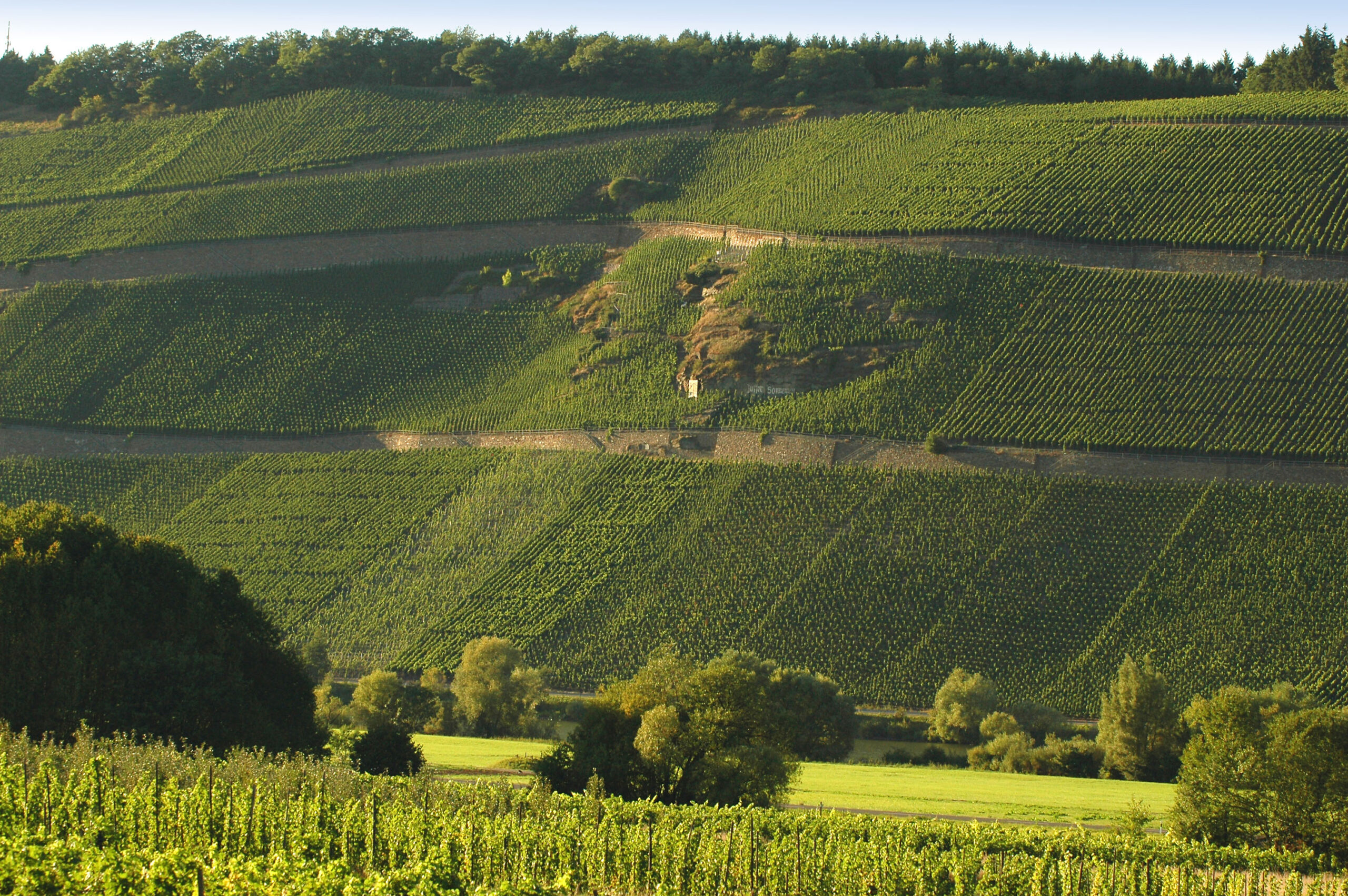
The Brauneberg hillside
Braunebeger Juffer
The Juffer vineyard surrounds the smaller Juffer Sonnenuhr on three sides, extending both upstream and downstream, as well as above the sundial. This vineyard produces lighter, more delicate wines than the warmer, riper Sonnenuhr.
Braunebeger Juffer Sonnenuhr
The Juffer Sonnenuhr is the choicest center cut of the Brauneberg—the steepest and most south-facing part of the hillside. This Grosse Lage site produces profound, distinctive wines with great purity and concentration.
Maximin Grünhaus GG Rieslings
The Maximin Grünhaus estate lies at the foot of a long, steep south-facing slope on the left bank of the tiny Ruwer river. It is divided into three separate but contiguous vineyards: Abtsberg, Herrenberg, and Bruderberg.
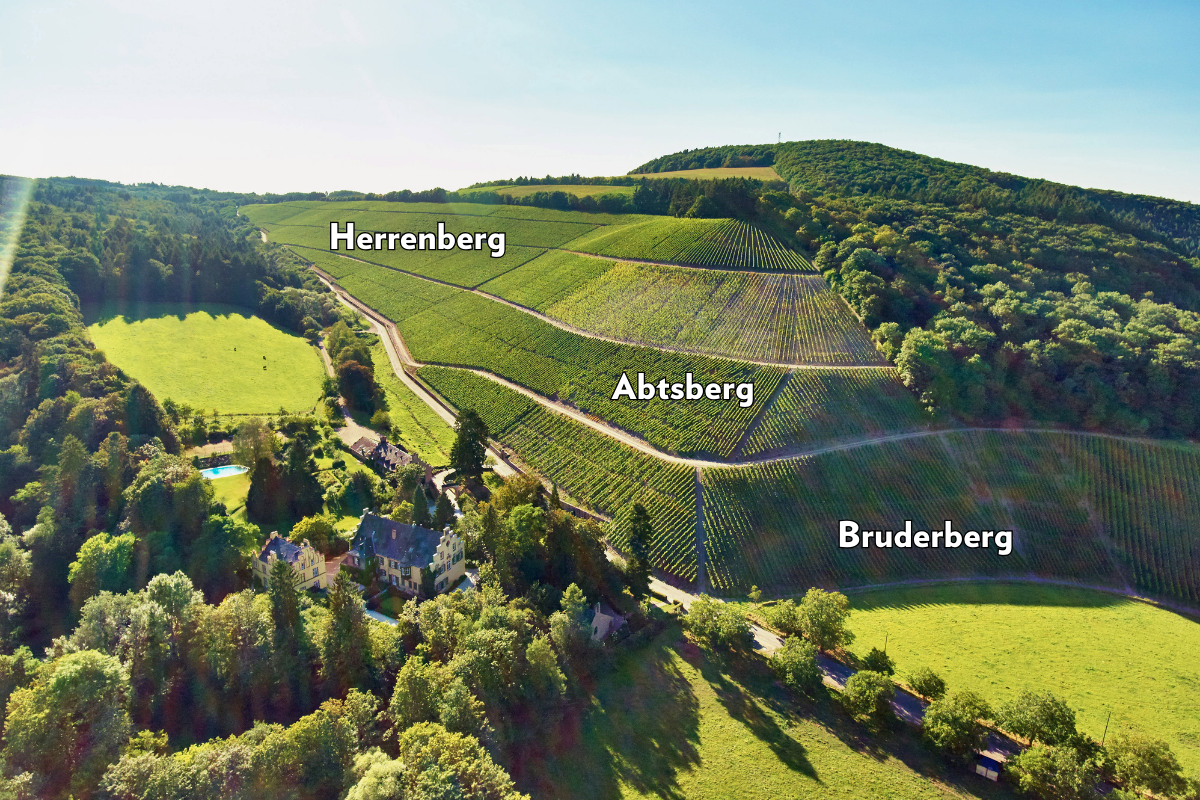
The Monopole vineyards of Maximin Grünhaus – Herrenberg, Abtsberg, and Bruderberg
Abtsberg
GG Rieslings from this site are characterized by a finely structured, subtle minerality, a racy acidity, generous fruit, and great delicacy. They are amongst the longest-lived Rieslings of the region.
Herrenberg
Wines from the Herrenberg benefit from deep soils and show fruit and body in their early lives, but also possess extraordinary aging potential.
Bruderberg
The smallest of the three vineyards, covering just 2.5 acres, produces wines that are very spicy, sometimes with a rustic slate-mineral quality.
Zilliken Rausch Riesling GG
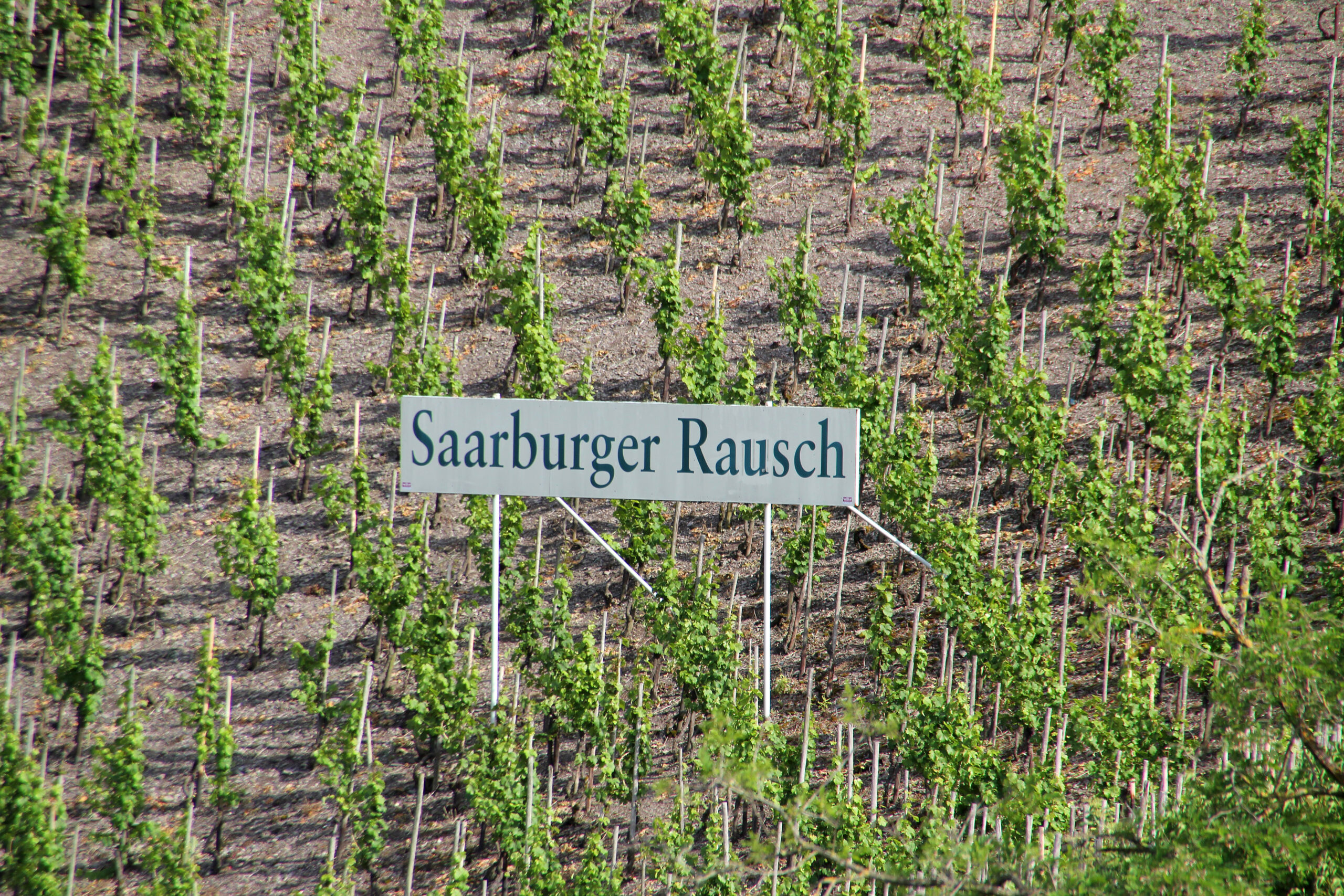
The Saarburger Rausch Vineyard
The exceptional Rausch vineyard is on a steep, south-facing slope with weathered gray slate. The light, well-draining soil brings focused precision and an intensely mineral edge to the wines. Cool herbal austerity opens a nose of breathtaking beauty and elegance.
Robert Weil Kiedrich Gräfenberg Riesling GG
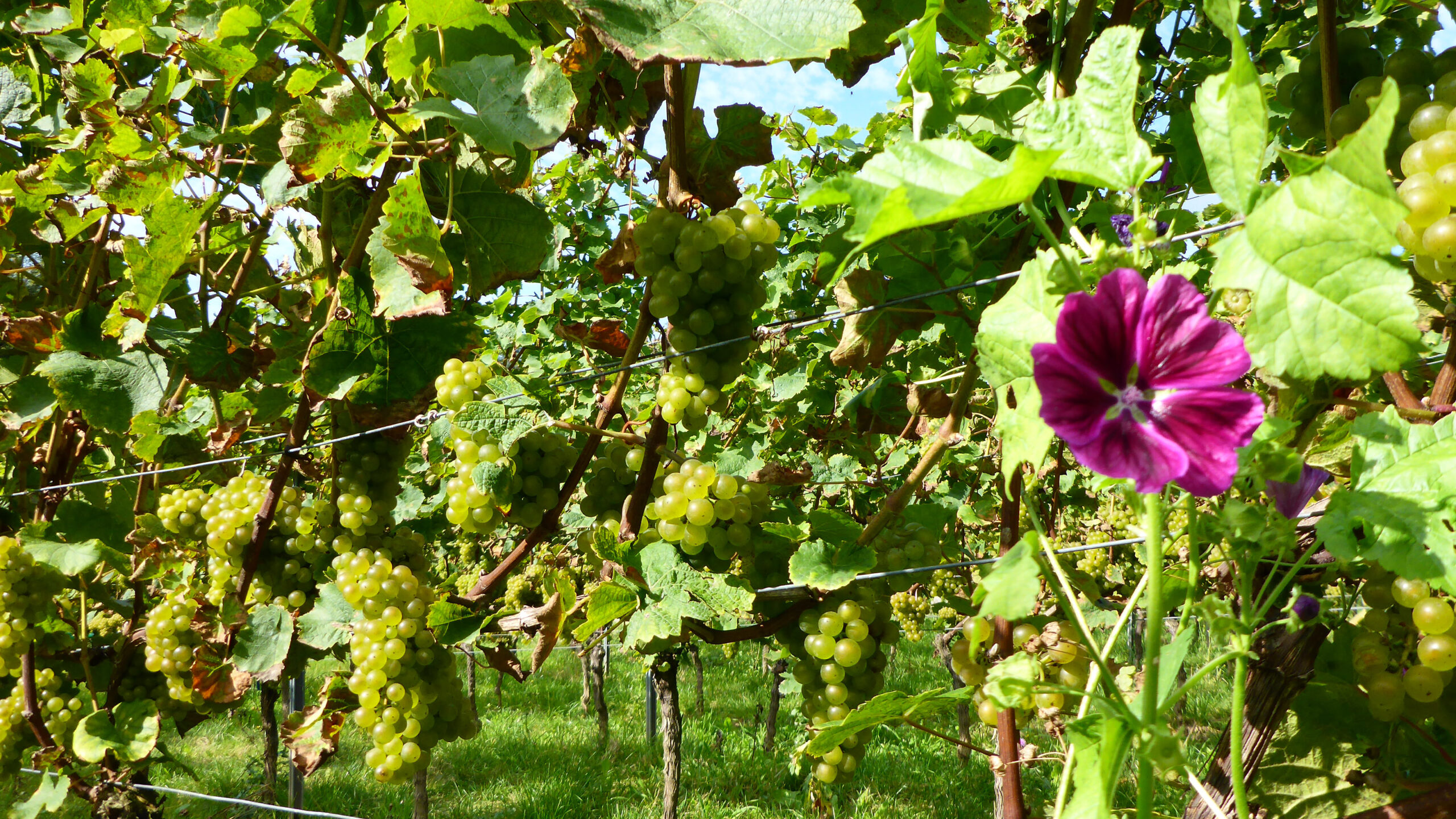
Fruit hanging in the Kiedrich Gräfenberg Vineyard
A perfect specimen of this mineral-rich terroir, displaying distinctive character and complexity. It offers a provocative balance of fruit, spice, and flintiness. It is weighty and complex on the palate, yet still quite elegant, with extraordinary length to the finish.
Wittmann GG Rieslings
The Wittmann family has deeply bonded with the biodynamic land they cultivate – their respect for nature and commitment to quality radiate from the wines. Explore the GG Rieslings from the Aulerde, Kirchspiel, and Morstein vineyards.
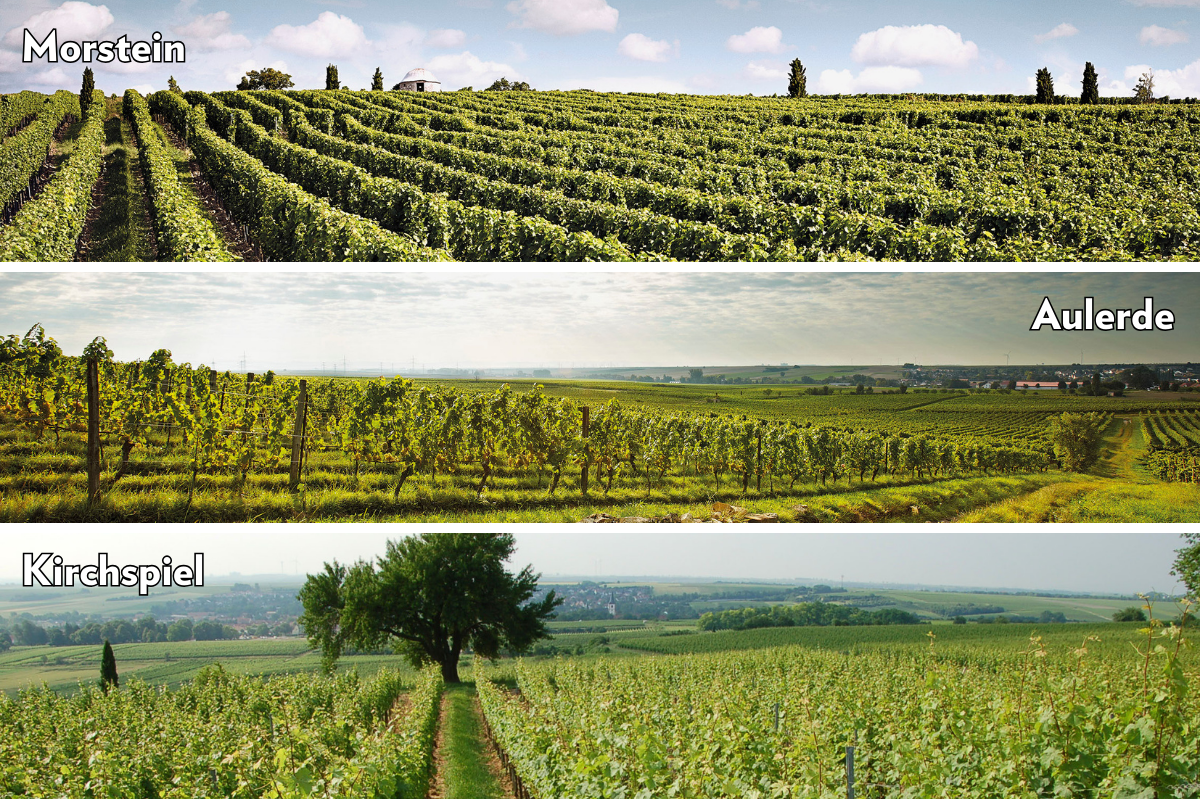
Wittmann Grosse Lage Vineyards
Aulerde
The topsoil is primarily a deep layer of loess, but in a small portion of Aulerde, there is a heavy clayish marl with only a small amount of limestone. It is only in this parcel that Riesling is grown in the Aulerde vineyard.
Kirchspiel
This site opens up like an amphitheater toward the Rhine and receives the sun’s first rays in the morning. Here the vines, with their east-to-southeast exposure, are sheltered from the cold west winds; this provides the Kirchspiel with a choice microclimate.
Morstein
The vines for the estate’s Morstein Riesling GG lie in a choice, five-hectare (12.3-acre) parcel of the site, consistently producing a magnificent wine of astonishing power, complexity, and grace.
All wines reflect their origins to some degree. But Riesling’s unadulterated purity gives it a transparency that allows the character of the soil, climate, and culture of its winegrowing region to shine through, uninhabited. This adds an extra dimension of diversity to Riesling’s broad range of sweetness levels. From the lime-tinged, austerely dry Rieslings of Australia, to the sappy, apple and mineral style of Washington state, to the feathery, slate-soil delicacy of the Mosel, Riesling captures the essence of the land and its people like no other variety.

